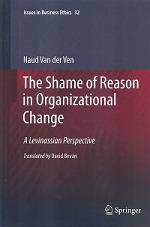It is very well possible to speak dispassionately about it. That’s what, for example, Daniel Kahneman does in his book Thinking, fast and slow. “Stereotyping in our culture is a loaded term, but as I use it here, the meaning is neutral. One of the main features of our intuitive system is that it interprets categories as standards or prototypes. This is how we understand horses, refrigerators and police officers.”
But that it múst be done – because in order to survive in emergencies we have to be able to act immediately and cannot allow any doubt – does not mean that our definitions are correct and our judgments founded.
So there is a fair chance that you put animals, people, things in the wrong box. And that is less innocent than it seems. Especially when you do that with people, because people in the last resort want themselves to have control over their own lives. If another puts them prematurely or wrongly in a certain box (that’s to say: defines them), it can feel like a border crossing: you don’t have anything to say about me! That feels like violence.
But at the same time, as I said, our lives are made up of definitions and labels that we impose on the world and others. And their obviousness sometimes is so big that it seems far-fetched to problematize them.
Thus you would think that the distinction between men and women is one of the most basic and easy ones that we can make. So that we may assume that everybody can be classified in one of those two categories. That’s why it is quite natural for us to ask: is it a boy or a girl?
However, what we then actually do, says Lies Wesseling, is that the many differences between people are thrown on just two heaps. Then everything that does not fit under the headings of ‘man’ or ‘woman’ is seen as deviant or as irrelevant.
But nature is not that clear cut, at least not always. And more importantly, individual human experience is not so clear. Someone in a woman’s body may feel himself a man, or vice versa, or something in between. If you pin such a person, as a matter of course, to a stereotype, you can cause serious damage.
How hurtful that obvious categorization can be may appear from the experiences of people for whom those categories were not suitable and whose stories only recently are being taken seriously: the transgenders. Those stories are pure sadness. And in the Netherlands their number easily runs into 50,000.
Now there is a new Dutch law that confirms that identity is something that only you yourself can feel and name. Transgenders can now administratively change sex, even without changing anything to the body. For example, it may happen that a man gives birth to a child, and is regarded as the mother.
The new law does not abolish the categories, so there is still spoken in terms of male and female. The dream of many transgender continues, such as Vreer puts it: “I dream of a birth certificate and an identitycard without gender designation. Even an X, as recently is allowed in Australia, can be an improvement. That means ‘not specified’, and so it is with me”.
But anyway, the new law infringes on stereotypes and definitions that until recently seemed to be cast in concrete. The law may therefore be seen as a Levinassian answer to the problem that Levinas treats with great tenacity in all his works: of the injuries that with our defining thought, seeking stable categories, we inflict to others.
Could possibly the Dutch Black Peter (Zwarte Piet) be such a dubious stable category as well?
Also see Kol Nidrei and other illusions

